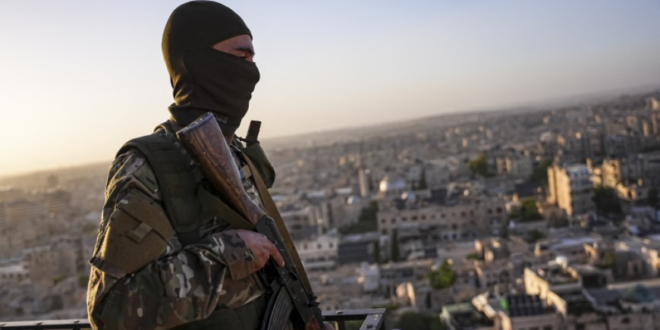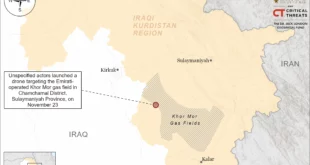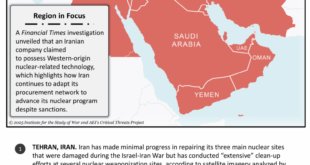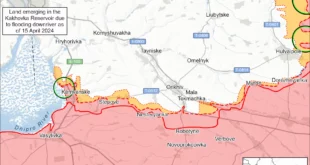In the uneasy interstice between war and peace, Syria grapples with a question striking at the heart of national sovereignty, social cohesion, and institutional legitimacy: what to do with thousands of foreign jihadist fighters who can neither be expelled nor ignored. The recent move to integrate roughly 3,500 of these militants—most notably from the Uyghur-dominated Turkistan Islamic Party—into a new military division has ignited fierce political, ethical and security debates. While some frame this as a pragmatic solution for battle-hardened fighters with no repatriation options, others see it as a dangerous compromise that could erode Syria’s fragile foundations.
This dilemma exposes Syria’s deeper struggle to define itself after years of conflict. Is integration a necessary step toward stability, or does it risk institutionalizing the very forces that fueled the war? The decision carries implications far beyond military reorganization—it tests whether post-war Syria can transcend its divisions or whether it will remain trapped in the logic of armed factionalism. With regional powers and international actors watching closely, the fate of these fighters may well determine whether Syria’s reconstruction leads to genuine stability or merely sets the stage for future conflict.
The stakes extend beyond borders: as Syria attempts to contain its past, it may inadvertently be shaping the seeds of its future—one where the lines between national army and transnational militancy become dangerously blurred. This is not just about absorbing fighters into ranks, but about what kind of state Syria intends to become.
Integration as a Mirror of Power, Not Principle
Eyad Jaafari approaches the debate by peeling away what he sees as the veneer of principle on both sides of the controversy. According to Jaafari, the arguments for and against the integration of foreign fighters are rarely grounded in the substance of the policy itself. Rather, they are reflections of pre-existing positions toward the ruling authority. Proponents of integration often defend the plan out of alignment with President Ahmad al-Sharaa’s administration, while detractors oppose it primarily out of distrust in the authority’s long-term intentions.
Jaafari sees in this development not a radical break but an extension of existing realities. The fighting corps of the new Syrian military, he argues, already comprises thousands of Syrian fighters steeped in jihadist ideology, many of whom fought alongside the foreign contingents. To focus exclusively on the foreignness or radicalism of the Uyghur fighters, while ignoring the ideological overlap with local units, is to miss the broader dynamics of continuity. Moreover, he points to the precedents set by Hay’at Tahrir al-Sham’s successful containment and repurposing of foreign jihadists since 2017 as the foundation upon which the current policy rests. The deeper concern, in Jaafari’s view, is not the ideological risk per se, but how the regime might exploit these fighters—whether as tools of repression or as bargaining chips on the international stage.
A False Foundation for Statehood
While Jaafari’s critique is political and contextual, Malek al-Hafez casts a darker shadow over the implications of integration, warning of an ontological confusion at the core of state-building. For Hafez, the decision to incorporate foreign fighters is not simply a security measure—it is a founding act that threatens to dissolve the very idea of the Syrian state as a national and civic institution.
Hafez warns that the move blurs the line between the nation-state and the transnational jihadist project, replacing the notion of a unified national army with what he calls “a forced coexistence between contradictory narratives.” On one side, there is the citizen-soldier seeking to reclaim a sovereign state; on the other, a militant whose loyalties lie with an abstract ummah unbounded by geography. The result, he fears, will not be institutional cohesion but “explosive securitization”—a fragile arrangement that embeds future conflict within the very architecture of the state.
Citing the work of security theorists such as Barry Buzan and Ole Wæver, Hafez warns that states emerging from civil war often adopt exceptionalist security policies that justify short-term integration of former enemies as a pragmatic necessity. But such arrangements, he argues, rarely lead to stability. Instead, they create institutional fault lines prone to internal collapse, fragmentation, or rebellion.
The Realpolitik of Containment
Oghaid Hijazi offers a more descriptive account, grounding his analysis in recent developments and international calculations. Drawing from a Reuters report, Hijazi confirms that the United States, after prolonged hesitation, has agreed to the integration of foreign fighters into the Syrian military—so long as the process remains transparent and contained. Thomas Barrack, the Trump administration’s special envoy to Syria, reportedly endorsed the plan on the logic that it is better to have these battle-hardened militants within the state apparatus than outside it, where they might rejoin groups like ISIS or al-Qaeda.
Hijazi presents the plan as a form of pragmatic containment, shaped less by ideology than by geopolitical necessity. Many of these fighters, he notes, are effectively stateless. Their countries of origin, especially China, refuse to repatriate them, and their continued presence in limbo constitutes a long-term security risk. For President Sharaa, their integration is not only a way to manage this risk but also to co-opt their military value in the service of a reconstituted Syrian army.
Still, Hijazi does not discount the potential dangers. He cites military expert General Hassan Jouni, who expresses deep unease at the inclusion of fighters designated as terrorists by China, warning that such a step could fracture the legitimacy of the armed forces and strain international relations, particularly with Beijing. Jouni also fears that integrating ideologically committed jihadists into an army tasked with upholding national unity may create more problems than it solves—particularly if their loyalty to the Syrian state remains tenuous or conditional.
Between Necessity and Undoing
Together, these analyses present a sobering portrait of post-war Syria’s contradictions. Jaafari sees the integration of foreign fighters less as a break with the past than a continuation of the power logic established by HTS and now repurposed by the transitional government. Hafez sees it as a foundational misstep that could sabotage the creation of a genuinely civic order. Hijazi presents the policy as a grim necessity, a compromise born of the impossibility of repatriation and the fear of renewed insurgency.
What binds these perspectives is a shared recognition that Syria’s post-conflict transition is not occurring in a vacuum. It is unfolding under the weight of international expectations, regional rivalries, ideological fault lines, and a fractured social fabric. The integration of foreign fighters is not merely a question of military reform—it is a litmus test for what kind of state Syria is becoming: a civic republic, a theocratic hybrid, or a brittle authoritarian project in new clothes.
The real risk, as all three writers suggest in their own way, is not simply that these fighters will rebel. The deeper danger is that their integration will institutionalize a logic of exception, coercion, and ideological ambiguity at the very heart of Syria’s fledgling institutions. In trying to contain the past, Syria may be incubating the future seeds of its next collapse.
The integration of foreign fighters into Syria’s post-war order is more than a tactical compromise—it is a defining choice with far-reaching consequences. While pragmatism may demand their inclusion to prevent further instability, the risks are profound: the erosion of national identity, the entrenchment of ideological divisions, and the potential for future conflict embedded within the state itself.
Syria stands at a crossroads. Will it emerge as a cohesive nation, or will it remain bound by the logic of militarized exceptionalism, where security trumps sovereignty and expediency undermines legitimacy? The debates surrounding these fighters reflect a deeper struggle—not just over their fate, but over what kind of Syria will rise from the ashes of war.
The world watches closely, for the outcome will resonate far beyond Syria’s borders. If history is any guide, the institutionalization of armed factions rarely leads to lasting peace. Instead, it risks perpetuating cycles of violence under a veneer of order. The true challenge, then, is not merely absorbing these fighters into the ranks, but confronting the deeper fractures that their presence exposes. Without reconciliation, accountability, and a clear vision of civic belonging, Syria’s reconstruction may prove to be little more than a fragile illusion—one that could shatter when put to the test.
 Eurasia Press & News
Eurasia Press & News



